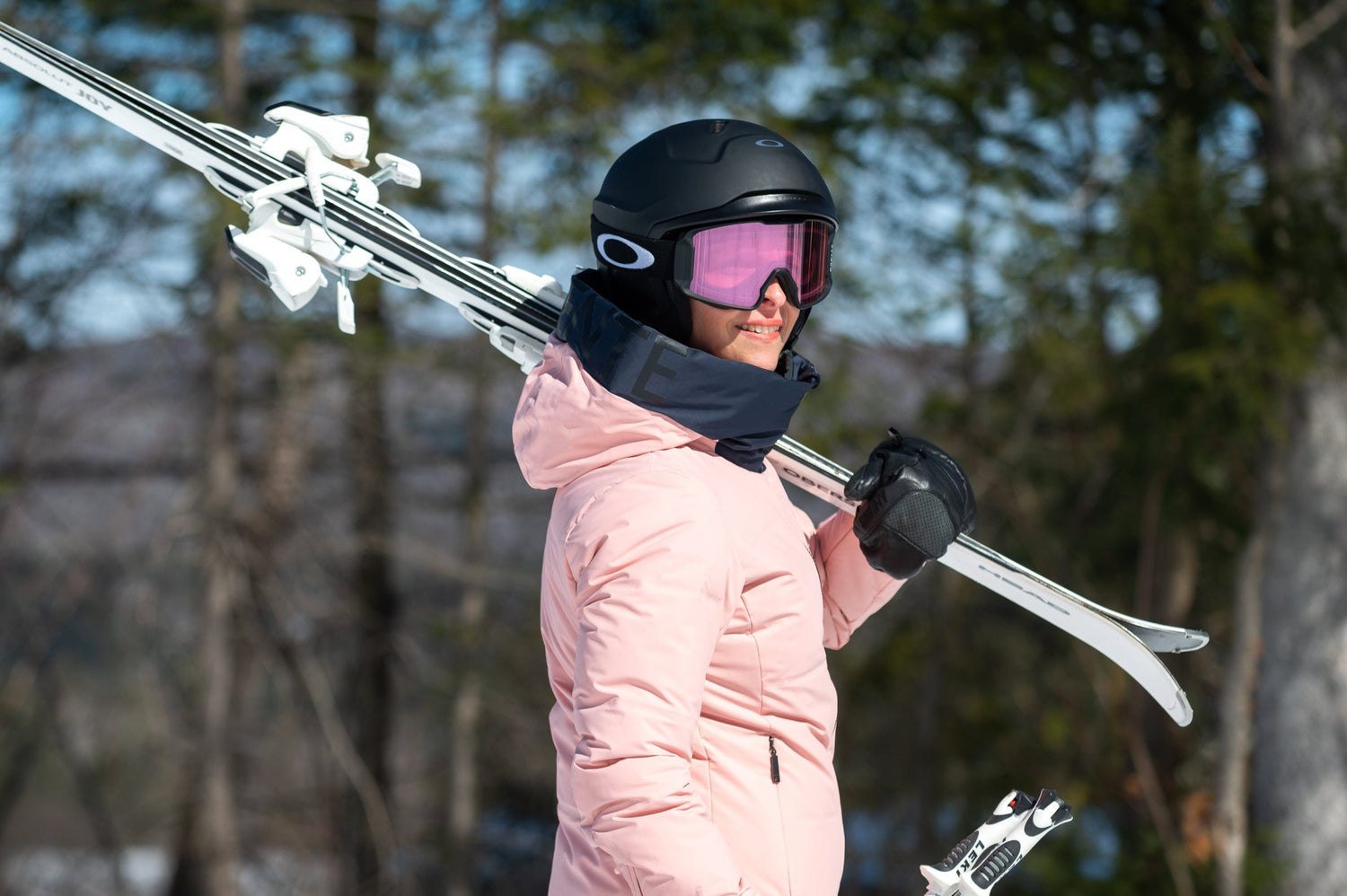Why Wear Bike Sunglasses?
You don’t own any bike sunglasses yet? Whether for road or mountain biking, they’re an accessory that’s not just about how you look.
Pros of wearing glasses when biking
- Blocks debris and insects
- Protects your eyes from UVA and UVB rays
- Prevents eye dryness
- Prevents you from being dazzled by sunlight
If you are looking for a pair of sunglasses, check out our blog on How to choose your new pair of sunglasses.
2. Choosing Road Bike Sunglasses
Selecting the frame type for road biking
A pair of bike sunglasses must be sturdy, comfortable and offer excellent visual clarity to allow you to perform at your best.
Curved frame
When it comes to sunglasses design, curved frames provide better protection against road debris from multiple angles. Plus, the shape enhances comfort because they stay in place better when you ride over rough patches. Another advantage of curved frames is that they allow air to flow outwards, which prevents eye dryness. You should also consider the type of bike you ride when choosing your next pair.
Frameless bicycle sunglasses
If you’re a cyclist who rides an aero or performance bike, frameless sunglasses ensure a lighter weight. An endurance cyclist should choose sunglasses with frames for greater durability.
The frames of bike sunglasses also often have contact points made of grippy materials that provide the most comfort when you’re giving it your all.
Try on your bike sunglasses with your helmet
Obviously, the fit with your bike helmet must be taken into consideration. By visiting an Oberson shop, you can try on multiple road bike sunglasses with your helmet to make sure that you don’t feel any uncomfortable pressure points.

Selecting the lens type for road biking
Choosing the right lens is crucial for high-level performance.
Polycarbonate lens for safety
A polycarbonate lens is highly recommended because, unlike glass, it won’t shatter on impact, which helps prevent serious eye injuries. Depending on the external brightness, these lenses don’t provide the same visual clarity.
Brightness levels to consider
It’s important to understand the differences between brightness categories 0, 1, 2, 3 and especially 4. The lower the number, the clearer the lens and the more suitable it is for low-light conditions.
- Category 0: 80% to 100% light transmission for evening or very early morning rides
- Category 1: 43% to 80% light transmission for riding in cloudy conditions
- Category 2: 18% to 43% light transmission for variable to sunny rides
- Category 3: 8% to 18% light transmission for rides with very few clouds and constant sunshine
- Category 4: 3% to 18% light transmission for extremely bright conditions

Lens tint based on the weather
Lens tints depend mainly on their category of brightness transmission.
Pink or orange tint: Lenses with an orange or pink base provide better vision in environments with low brightness.
Grey or black tints: These perform best on sunny days.
Photochromic lens for its versatility
And if you’re a cyclist who takes out your road bike no matter what the conditions, photochromic lenses are designed for you. This type of lens darkens when exposed to sunlight. Some companies, such as Oakley and Smith, offer advanced technologies—Prizm™ and Chromapop™ respectively—that heighten colour contrast for a more accurate view of your surroundings.
UV protection
Contrary to popular belief, you can’t just put a pair of sunglasses on your face and get full eye protection from harmful UV rays. Lower-quality glasses filter harmful rays less effectively and can damage your iris. This can lead to headaches at the time and even accelerate eye degeneration.
Think about ventilation to avoid fogging up your bike glasses
Ventilation is another feature you should consider. Since cycling is an intense physical activity, moisture can build up on the lens if ventilation is inadequate. Some models have ventilation slots on the lens that enhance airflow and prevent condensation.

3. Choosing Mountain Bike Sunglasses
As with road biking, choosing the right mountain bike sunglasses is important so that you can safely perform at your best. They protect you against debris and dust from mountain trails. Bike sunglasses allow you to pick up details of the terrain more easily, which makes for safer downhills.
Selecting the frame type for mountain biking
Full frame
Mountain bikers often favour full frames because they protect your face better and improve the durability of your sunglasses during crashes. Frames that are slightly curved should be prioritized since they block debris without hindering airflow. Mountain bike sunglasses often have wide lenses that maximize eye protection while enhancing peripheral vision.
Frames for Downhill
For downhill riders who like to jump high into the air, getting as much protection as possible is crucial. That’s why some riders prefer goggle-style bike sunglasses. They offer complete protection against debris, dust and wind while ensuring better shock absorption for falls. However, an important point to remember is that goggles have poorer air circulation on hot days.
Make sure you have the right fit with your helmet
As with road bike sunglasses, fit is a key aspect to consider when choosing new mountain bike sunglasses. You should also think about the nose pads and temple tips. They ensure that your bike sunglasses stay in place when you sweat.
Selecting the lens type for mountain biking
Polycarbonate, a safer value during falls and crashes
Before taking look at lens tints, we’ll go over the different lens types. Choosing polycarbonate instead of glass lenses is highly recommended. During an impact, polycarbonate will be able to protect your eyes while a glass lens glass will shatter and could cause injuries.
The tint: if in doubt, go with a clearer lens
When choosing a lens tint for mountain biking, the general recommendation is to go with clearer lens colours. The reason behind this way of thinking is that mountain conditions are highly variable. With maximum brightness for your eye, you’ll be able to better see the jumps and all the details of the terrain for a safer descent. A dark lens can make you miss details in the shadows. Clear or orange-tinted lenses are very popular with riders.

Photochromic lens that adapts in the mountains
The option of a photochromic lens that adapts to varying brightness is also worth considering. And as with road bike sunglasses, contrast-enhancing lenses, such as Prizm™ from Oakley and Chromapop™ designed by Smith, are wise choices if you don’t mind paying a bit more.
Think about ventilation to avoid fogging up your bike glasses
Condensation occurs when your effort level is too high for the airflow. Generally speaking, this happens because the glasses are too close to your face. You should select mountain bike sunglasses that leave room between your face and the lenses for air to circulate. Sunglasses with ventilation slots ensure maximum airflow.
Your choice of sunglasses, whether for road or mountain biking, depends on several factors. Keep in mind that the price varies significantly based on the quality of the materials used in the frame and lenses. More expensive sunglasses use better quality materials and processes to provide maximum comfort and performance.
If you need help to choose a new pair of sunglasses, check out our blog on How to choose them.







